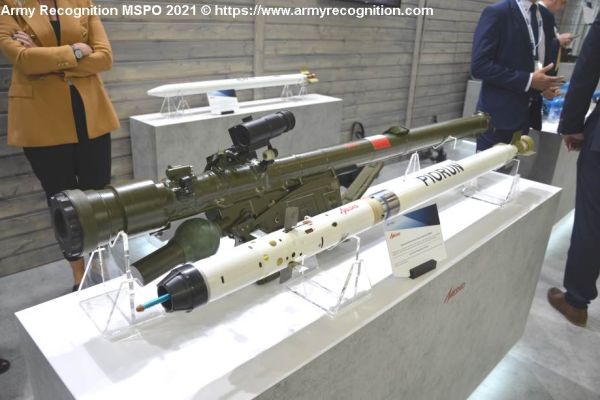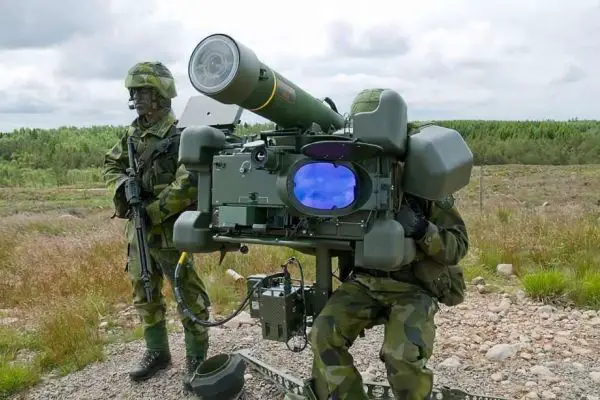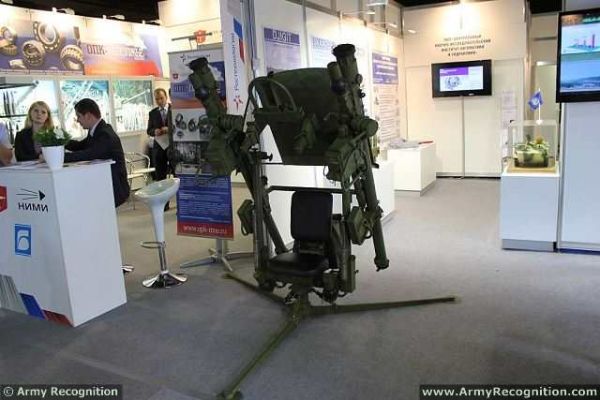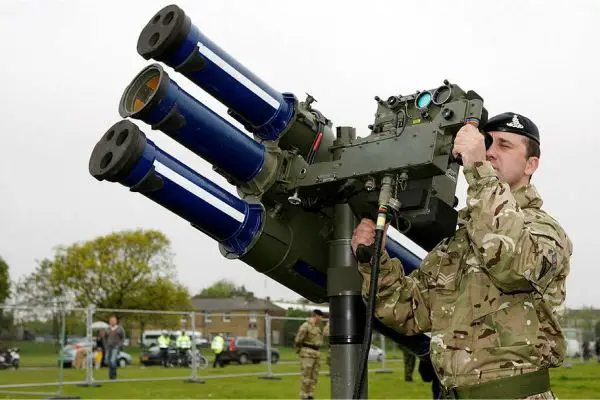Man-Portable Air Defense Systems.
Mistral 3 MANPADS.

The Mistral 3 is a cutting-edge man-portable air defense system (MANPADS) designed and manufactured by MBDA, a multinational missile systems company headquartered in France. It represents the latest iteration of the Mistral family, combining decades of operational success with modern technologies to counter today’s and future airborne threats. Designed for rapid deployment and highly mobile air defense, the Mistral 3 is capable of engaging a wide variety of aerial targets, including fixed-wing aircraft, helicopters, drones, and cruise missiles.
Country users: Belgium, Brazil, Cyprus, Denmark, Estonia, France, Hungary, Indonesia, Romania, Serbia, Spain
Description
The development of the original Mistral system began in the early 1980s, with the first-generation missile entering production in 1988 and initial deliveries starting in 1989. Building on the operational success of the earlier Mistral models, the development of the Mistral 3 began in the late 2000s. It aimed to modernize the system to meet the growing need to counter increasingly agile and advanced aerial threats. The Mistral 3 entered production in the early 2010s, with the first deliveries commencing in 2014. This latest version represents a significant leap forward, incorporating enhanced guidance technology, improved maneuverability, and greater resistance to modern countermeasures.
The Mistral 3 is currently in service with many users, including France, Belgium, Hungary, Brazil, Indonesia, and other NATO and non-NATO countries. It is employed in various configurations, such as shoulder-launched systems, vehicle-mounted air defense platforms, and naval applications. As a MANPADS weapon, the Mistral 3 is designed for rapid deployment and mobility, making it a versatile tool for ground forces operating in dynamic battlefield conditions. Its fire-and-forget capability allows operators to engage targets with high precision while reducing the need for intensive training. Unlike beam-riding systems, the Mistral 3’s terminal accuracy is independent of the operator’s skills, ensuring consistent performance.
The Mistral 3 boasts impressive technical specifications, including an interception range of up to 8,000 meters and an altitude ceiling of 6,000 meters, with a single-shot kill probability (SSKP) exceeding 96%. This effectiveness, combined with its adaptability to harsh operational environments, makes it one of the most reliable and advanced, very short-range air defense (VSHORAD) systems available today.
On April 1, 2025, the French Government announced that France will deliver several hundred Mistral 3 surface-to-air missiles to Denmark under a major defense agreement concluded during the state visit of King Frederik X to Paris. The information was also confirmed on April 1, 2025, by the Danish Ministry of Defense, which stated that Denmark has officially signed an agreement to acquire French Mistral missiles for use in the Danish Army’s future very short-range air defense systems.
Mistral 3 MANPADS variants:
- Mistral M1: The first operational version of the Mistral surface-to-air missile, deployed in 1988. It laid the foundation for future advancements in the Mistral family.
- Mistral M2: A minor upgrade of the Mistral missile, featuring a reduced weight to improve performance. This version offered increased range and speed, extending the range from 5 km to 6 km. It was introduced in 1997.
- Mistral M3: A significant modernization of the Mistral missile, equipped with an advanced imaging infrared seeker for enhanced target acquisition. This variant also boasts increased speed and a range of up to 7 km. The Mistral M3 was launched in 2014.
Technical Data
-
Launcher Unit
The Mistral 3 launcher unit is a compact and ergonomic system that enhances ease of use and operational efficiency in combat scenarios. The launcher is operated by a two-person team: a primary operator who handles aiming and firing and a secondary crew member responsible for target acquisition and reloading. The system features an integrated thermal imaging sight that allows for effective operation in all weather conditions, including nighttime engagements.
The launcher’s design emphasizes portability, enabling the crew to deploy and reposition as needed rapidly. It is equipped with a fire-and-forget capability, allowing the operator to disengage immediately after firing to seek cover or prepare for subsequent engagements. Its rapid reload mechanism ensures the ability to engage multiple threats quickly, while the ergonomic design minimizes operator fatigue, making it suitable for extended operations in high-stress environments.
-
Missile
The Mistral 3 missile is a state-of-the-art fire-and-forget weapon system designed to neutralize a broad range of aerial threats with exceptional precision. The missile measures 1.88 m in length, weighs less than 20 kg, and has a diameter of approximately 92 mm. It is equipped with a 3-kg high-explosive warhead, enhanced with a laser proximity and impact fuse, ensuring effective destruction of both maneuvering and armored targets.
Powered by a two-stage solid-propellant rocket, the missile achieves a high supersonic speed of 930 meters per second, enabling rapid interception of fast-moving threats. The missile’s high maneuverability, rated at up to 30g, allows it to counter aerial targets performing evasive maneuvers of up to 9g. It has an interception range of 500 to 8,000 m and an altitude ceiling of 6,000 meters, making it highly effective in both close-range defense and medium-altitude engagements. Furthermore, the missile is designed for durability and reliability, with a 20-year maintenance-free operational life and the ability to function in extreme temperatures ranging from -40°C to +71°C.

-
Guidance System
The Mistral 3 employs a sophisticated cooled infrared (IR) seeker, making it the first very short-range air defense missile to utilize an IR matrix imager. This guidance system provides exceptional sensitivity, allowing it to easily engage even low-signature and stealthy targets. The seeker is fully passive and emits no signals, making it immune to jamming and detection. Its advanced image-processing algorithms enable it to distinguish genuine threats from decoys, ensuring high reliability in complex combat environments.
The missile’s three-axis maneuverability ensures precise tracking and guidance, even in the terminal phase of engagement. It is highly resistant to modern infrared countermeasures such as flares, ensuring its effectiveness against technologically advanced adversaries. The fire-and-forget functionality further enhances its versatility, enabling operators to quickly redeploy or re-engage after firing.
-
Combat Use
The Mistral 3 is designed to address various modern aerial threats in both high- and low-intensity combat scenarios. Its primary targets include fixed-wing aircraft, such as ground-attack jets and reconnaissance planes, as well as rotary-wing platforms like attack and utility helicopters. It is also highly effective against unmanned aerial vehicles (UAVs), ranging from reconnaissance drones to larger armed systems and cruise missiles.
The system’s interception range of up to 8,000 meters and altitude ceiling of 6,000 meters makes it suitable for neutralizing targets at varying ranges and altitudes. Its fire-and-forget capability ensures rapid response times, while the missile’s high supersonic speed and extreme maneuverability enable it to counter fast and agile threats. With a single-shot kill probability exceeding 96%, the Mistral 3 is highly reliable even against advanced aerial platforms employing modern countermeasures.
The Mistral 3 is combat-proven and qualified for use in harsh operational environments, from arid deserts to frigid arctic conditions. Its adaptability and unmatched effectiveness make it an indispensable component of modern air defense systems deployed by armed forces worldwide.
Specifications
-
Type
MANPADS man-portable air defense system - VSHORAD Very Short Range Air Defence System,
-
Country users
Belgium, Brazil, Cyprus, Denmark, Estonia, France, Hungary, Indonesia, Romania, Serbia, Spain
-
Designer Country
France
-
Combat Weight
The complete system, including the missile and launcher, weighs approximately 20 kg.
-
Crew
Typically operated by a two-person team: a gunner and a commander.
-
Target Engagement
Capable of intercepting targets at altitudes up to 6,000 meters.
-
Missile
- Weight: 20 kg
- Warhead Weight: Approximately 3 kg.
- Warhead Type: High-explosive with tungsten ball projectiles.
- Flight Speed: High supersonic speed of approximately 930 meters per second
- Range: Up to 8 km -
Reaction Time
The system can be made operational in under five seconds and has been engineered to be fired in less than five seconds.
-
Range
600 km
-
Guidance System
Infrared imaging seeker with advanced image processing capabilities, providing high resistance to countermeasures.
-
Dimensions
Length: 1.88 m; Diameter: 0.92 m











































